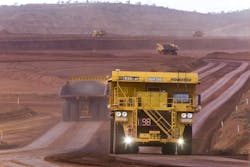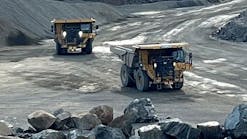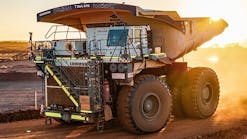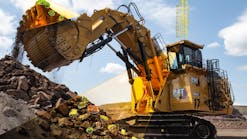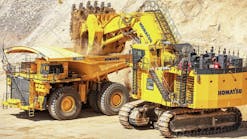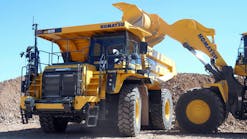Construction Remains Ahead in Autonomous Vehicles
Though self-driving (autonomous) cars being tested by the likes of Google and Tesla get all the glamour and publicity, the construction industry remains ahead of the trendy curve that is autonomous vehicle deployment—primarily with the many dozens of rigid frame haul trucks working in mines and quarries today.
The trucks’ actual, ongoing work in mining beats a few brightly logo’d self-driving cars, with “safety drivers” in place (just in case), giving rides in suburban Phoenix.
Indeed, in a recent AEM podcast, no less than Forbes magazine’s Alan Ohnsman, its senior editor for Future Mobility, confirmed he expects that going forward, construction use of autonomous vehicles will be ahead of self-driving cars for consumers.
“I would anticipate that deployments of autonomous vehicles for agricultural use, construction sites, mining, will be on a faster path than self-driving cars and trucks,” Ohnsman said.
One of the reasons, according to Ohnsman, is the lack of legal and regulatory barriers compared to what driverless cars face for operation on public roads.
Autonomous trucks in mining
The lack of those barriers, along with wide-open spaces, and fewer vehicles/pedestrians, and repetitive, predictable tasks, is one of the prime reasons Caterpillar and Komatsu chose mining as the frontier for their autonomous equipment.
As of September, Komatsu said 250 of its “Autonomous Haulage System” trucks working at mines around the world. Cat and Komatsu together have reported billions of tons of material moved so far by autonomous means—with no system-related accidents.
How LIDAR works
These mining trucks use LIDAR to capture a 3D look at the world around them, going beyond what’s captured by cameras and radar-only systems.
Caterpillar’s LIDAR system mounted on the front of its haulers contains 64 lasers that gather millions of points of data every second to give the truck a view of its environment.
LIDAR works by sends out the electric pulses to sense objects around the vehicle. These signals bounce back, and then are combined with GPS for the “big picture” of location, speed, and any obstacles. All of this is instantly fed to a computer, which makes real-time decisions governing truck operation.
Ellice Perez, head of Laser Bear, a subsidiary of Waymo, Google’s self-driving car project, told AEM that her company is already working with customers in construction and mining, refining LIDAR even further to face conditions inherent in those industries.
“There's a lot of debris, and foliage, and dust, and things like that, and with our LIDAR, we have multiple returns per shot, which means that we can perceive through the foliage and the dust, and that, in particular, is really interesting for our customers in construction,” Perez said.
Autonomous advantages
On a smaller scale than the giant autonomous haul trucks involved in mining, Volvo Construction Equipment has tested autonomous battery-electric haulers in Sweden, reporting a number of huge gains in the areas of emissions, noise, and fuel efficiency.
Other advantages of autonomous mining equipment being reported by manufacturers include increased safety (reducing the number of personnel on site), increases in production (streamlined, non-wavering driving routes, no lunch or bathroom breaks during operation), and reductions in total operating costs (less truck maintenance due to harsh or variable operation by drivers, and less tire wear).
